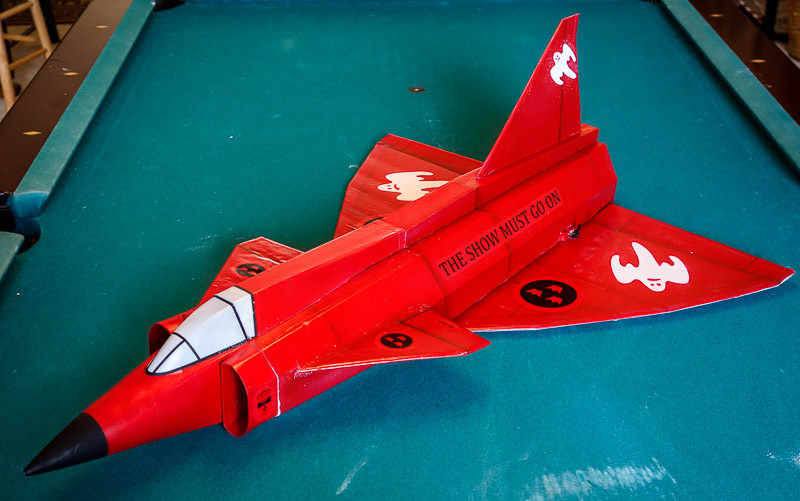
Flite Test Viggen Nose
thingiverse
I was impressed by the Flite Test Viggen, but its foam board nose left something to be desired in terms of aesthetics and scale accuracy. Additionally, building it proved to be a hassle. However, I appreciated the concept of a disposable/replaceable nose, which is why I decided to 3D print one along with some modifications to the cheek inlets. Unfortunately, the raw foam edges of the intakes looked rather chunky. The print was done using a 0.8mm shell and incorporating longitudinal stiffeners, all printed without additional support structures. As a result, the structure is heavier than what would be achieved with a "vase mode" print, but significantly stronger. Weighing in at just under 100g, I believe further refinement could lead to even more substantial weight reduction. My idea of integrating internal foam structure within a vase mode skin would reduce weight, but it would also make the design much more complicated and negate the benefit of an easily replaceable sacrificial nose. The plane flies exceptionally well, and I've subjected it to numerous dramatic crashes into freshly plowed fields near our flying site as well as some tough hits on the harder lawn surface without sustaining any damage... so far. Given that every foam board plane is unique, I recommend printing this nose with the aft edge facing down on the build platform and aborting the print after a few layers to ensure it holds the shape of the mating surface. Then, compare how the aft edge of your nose matches up with the forward edge of your fuselage. Chances are you can adjust the X and Y scale values using your slicer without needing to redraw the STL file.
With this file you will be able to print Flite Test Viggen Nose with your 3D printer. Click on the button and save the file on your computer to work, edit or customize your design. You can also find more 3D designs for printers on Flite Test Viggen Nose.
